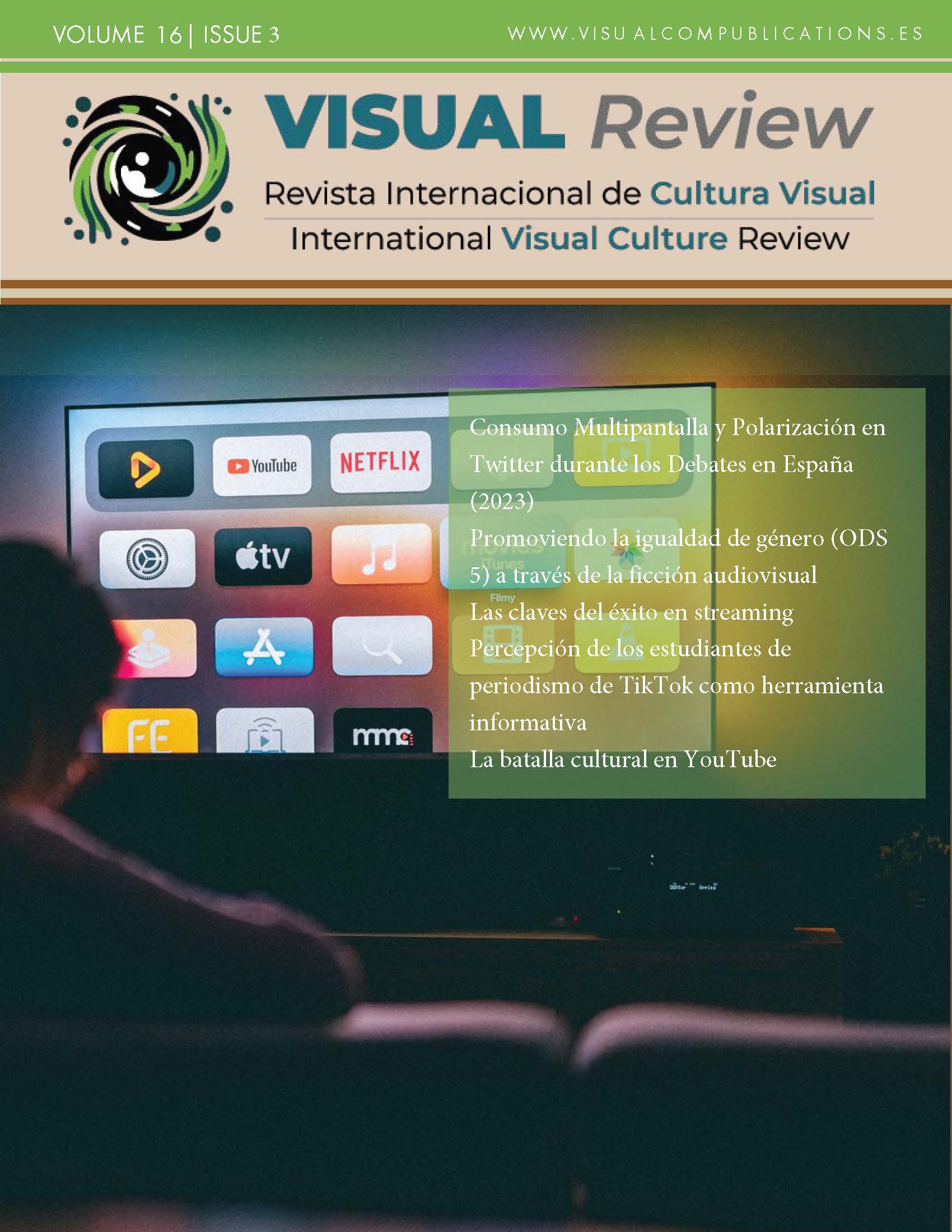Narrative Structures and Techniques of Traditional Series in Digital Platform Content
The case of role-playing series in Minecraft
DOI:
https://doi.org/10.62161/revvisual.v16.5271Keywords:
TV Series, Digital platforms, Content Creators, Minecraft, Role playing, Narrative, FormatsAbstract
In the digital age, online video platforms have revolutionized the way we consume entertainment. YouTube and Twitch, two of the most popular platforms, have undergone significant evolution since their inception, becoming containers for stories and narratives that go beyond simple improvised amateur content. television within the audiovisual content that is consumed by young people on digital platforms such as YouTube or Twitch.
The hypothesis is that the foundations and structures for telling stories are maintained, but we want to find out specifically what lasts through the formats.
Downloads
Global Statistics ℹ️
|
734
Views
|
862
Downloads
|
|
1596
Total
|
|
References
Aristóteles y Alsina Clota J. (2000). Poética. [5a ed.]. Barcelona: Icaria.
Blanco, N. (2015). Evolución y revolución de género en las series de ficción contemporáneas. La ultima
salida:La comedia. Salamanca. Tesis Doctoral.
Boutet, M., (2015) «Les séries télévisées sont-elles l’art majeur du XXIème siècle?», en Nectart 1 117. Cfr también Id., «Histoire des séries télévisées», en S. Sepulchre (ed.), Décoder les séries télévisées, DOI: https://doi.org/10.3917/nect.001.0107
Bruxelles, De Boeck, 2011, 11-46.
Burgess, J., & Green, J. B. (2010). YouTube: online video and participatory culture. Choice Reviews Online, 47(06), 47-2989. https://doi.org/10.5860/choice.47-2989 DOI: https://doi.org/10.5860/CHOICE.47-2989
Del Pilar, L., Furió, G., & Pérez López, J. (2015). El atractivo del mal: la figura del villano en la ficción
televisiva actual. Gandía. ValenciaTFG.
Dancyger, K., & Rush, J. (2013). Alternative Scriptwriting: Beyond the Hollywood Formula. Taylor & Francis. DOI: https://doi.org/10.4324/9780240522470
Espinoza, L., & Montini, R. (2021). Había una vez. . . Cómo escribir un guión (2o Edición). Nobuko.
García-Muñoz, N., y Fedele, M., (2011). Las series televisivas juveniles: tramas y conflictos en una «teen series» Television Fiction Series Targeted at Young Audience: Plots and Conflicts Portrayed in a DOI: https://doi.org/10.3916/C37-2011-03-05
Teen SeriesField, S. (1994). El libro del guión: fundamentos de la escritura de guiones : una guía
paso a paso, desde la primera idea hasta el guión acabado. Plot Ediciones.
Greco, M. (2019). Narrativa serial audiovisual: estructuras y procedimientos de la ficción televisiva. Toma Uno, 9692(7), 45–66. https://doi.org/10.55442/tomauno.n7.2019.26184 DOI: https://doi.org/10.55442/tomauno.n7.2019.26184
Huasasquiche-Carbajal, R. Y., Quiroz-Villavicencio, R. A., & Turriate-Guzmán, A. M. (2022). Adaptation of Conventional Movie Consumers to Streaming Movie and Series Platforms during Lockdown: A
Systematic Literature Review from 2019 to 2021.IEEE 5th International Conference On
Josep Prósper Ribes (2019): El suspense cinematográfico: montaje y organización tempor
al, en Electronics And Communication Engineering (ICECE).
https://doi.org/10.1109/icece56287.2022.10048625 DOI: https://doi.org/10.1109/ICECE56287.2022.10048625
Miguel Hernández Communication Journal, Vol. 10 (2), pp. 303-321. Universidad Miguel Hernández,
UMH (Elche- Alicante). DOI: http://dx.doi.org/10.21134/mhcj.v10i0.30
Miller, T & Tulloch,J (2015). The television Genre Book. The British Film Institute, London
Pereira Pérez, A., & del Campo Cañizares, E. (2022). Binge-Watching. Análisis de un caso de éxito: On My Block. SERIARTE. Revista científica De Series Televisivas Y Arte Audiovisual, 1, 138–163.
https://doi.org/10.21071/seriarte.v1i.13598 DOI: https://doi.org/10.21071/seriarte.v1i.13598
Poon, P., (2006). The Corleone Chronicles: Revisiting The Godfather Films as Trilogy. Journal of Popular Film & Television, 33(4):187-195. doi: 10.3200/JPFT.33.4.187-195 DOI: https://doi.org/10.3200/JPFT.33.4.187-195
Prosper Ribes, J. (2019). El suspense cinematográfico: montaje y organización temporal. Miguel Hernández Communication Journal (Online). 10(2):303-321.
https://doi.org/10.21134/mhcj.v10i0.309 DOI: https://doi.org/10.21134/mhcj.v10i0.309
Saló, G. (2003) ¿Qué es eso del formato? : Cómo nace y se desarrolla un programa de televisión. Gedidsa. España
Storr, W., Abásolo, O., (2022). La ciencia de contar historias : por qué las historias nos hacen humanos y cómo contarlas mejor. Madrid: Capitán Swing.
Valverde, J. C., (2008). Aprender a pensar históricamente con apoyo de soportes informáticos. Culture And Education, 20(2), 181-199. https://doi.org/10.1174/113564008784490370 DOI: https://doi.org/10.1174/113564008784490370
Zoonen, L. and Wring, D., (2012). Trends in political television fiction in the uk: themes, characters and
narratives, 1965–2009. Media Culture & Society, 34(3), 263-279.
Downloads
Published
How to Cite
Issue
Section
License
Those authors who publish in this journal accept the following terms:
-
Authors retain copyright.
-
Authors transfer to the journal the right of first publication. The journal also owns the publishing rights.
-
All published contents are governed by an Attribution-NoDerivatives 4.0 International License.
Access the informative version and legal text of the license. By virtue of this, third parties are allowed to use what is published as long as they mention the authorship of the work and the first publication in this journal. If you transform the material, you may not distribute the modified work. -
Authors may make other independent and additional contractual arrangements for non-exclusive distribution of the version of the article published in this journal (e.g., inclusion in an institutional repository or publication in a book) as long as they clearly indicate that the work was first published in this journal.
- Authors are allowed and recommended to publish their work on the Internet (for example on institutional and personal websites), following the publication of, and referencing the journal, as this could lead to constructive exchanges and a more extensive and quick circulation of published works (see The Effect of Open Access).













